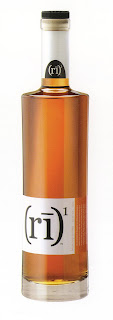 (rī)1
(rī)1I'll get back to that typographical nightmare in a moment.
Last year, I wrote a cover story for Whisky magazine titled "The Rye Rebound."
The editors of the UK magazine that is the bible of the global spirits industry were of the opinion that rye whiskey was regaining some measure of popularity among consumers and wanted me to check it out.
Their premise intrigued me. After all, along with many of my generation, I'd cut my teeth on the stuff because it was (1.) readily available, and (2.) cheap yet drinkable.
As I noted at the time, back in the dark ages of my occasionally misspent youth, when the legal drinking age in my home state of New York was 18 and minimum wage was less than a dollar an hour, 30 cents would buy you a nice highball. Really.
Highball. Then a common term for a simple mixed cocktail, now a quaint, anachronistic word. The highball of choice for my untrained young palate was rye and ginger. Four ounces of ginger ale and a shot of whatever rye the bartender poured into it. I wasn't into labels in those days. Even for the ginger ale.
Rye went the way of my youth, for the most part, until the past few years when it has become increasingly bandied about and new versions of it have been released by adventurous distillers.
Sazerac Straight Rye, Thomas H. Handy Sazerac Rye, Rittenhouse 21 Year Old Single Barrel Rye, Rittenhouse 100 Proof Bottled-in-Bond Rye ... . These have been among the top medal winners as rye began coming out of the shadows.
The rebound, however, wasn't as rapid as the bourbon comeback of a few years ago, or the veritable flood of vodkas that have pushed ginmakers into their labs to come up with a way to mount a comeback of their own among white spirits.
(By statute, rye whiskey is made from a mash of at least 51% rye, a grass that is part of the wheat family. The remainder usually is malted barley and corn. That makes it unique among North American whiskies. Although much Canadian whiskey is labeled “rye,” modern products use very little of the grain.)
Such star bourbon makers as Jim Beam, Wild Turkey, Old Overholt and Van Winkle have been cautiously pushing their ryes. Old Potrero, lesser known but a must-have with rye aficionados, has several styles, as does Michter's, arguably the United States’ oldest existing rye name despite a gap in its lineage. Most historians think it supplied George Washington's Continental Army during its bitter winter encampment at Valley Forge, PA, in the midst of the breakaway from England. Although Michter's distillery today is located in Bardstown, KY, then it was in Schaefferstown, PA.
And, speaking of Washington, his own fondness for rye whiskey made on his Mount Vernon, VA, farms was reborn on a sunny April afternoon in 2007 when his distillery, destroyed by a devastating fire nearly two centuries ago and just rebuilt from descriptions in his diaries, was unveiled. It’s a working distillery and has been producing rye.
Every now and then an incredibly delicious example of rye has come along. And, with it, the rebound ratchets up one more notch. One such is Black Maple Hill 23 Year Old Straight Rye Whiskey, without doubt the finest rye I’ve ever experienced. It also is in the over-$140 a bottle ultra-premium category.
It is not alone there. Heaven Hill has a limited edition of Rittenhouse Very Rare 21-Year-Old Single Barrel Straight Rye Whiskey priced at $150 a bottle.
But in the more inclusive $40-$95 slice of the premium-price niche where the mass of discerning people shop, there have not been a large number of new entries in the past 18 months or so. Until now. Beam Global Spirits has just released (rī)1 -- which translates to "rye one."
While it may create nightmares for typesetters and graphics people with such a strained effort at coming up with a name that sets it apart, it does have the Beam cache behind it, something not to be taken lightly.
The ruby-tinted amber spirit weighs in at a suggested retail price of $46-$48 for the 750ml bottle, and 46% (92 proof) alcohol by volume. This is a proprietary blend, which gives Beam plenty of leeway in its creation, although the company says (rī)2 and (rī)3 variants are in the works to create a wider product line.
[Go here for my tasting notes on (rī)1.]
To Dowd's Wine Notebook latest entry.
To Dowd's Spirits Notebook
To Dowd's Brews Notebook latest entry.
To Dowd's Non-Alcohol Drinks Notebook latest entry.
To Dowd's Tasting Notes latest entry.
Back to Dowd On Drinks home page.
No comments:
Post a Comment